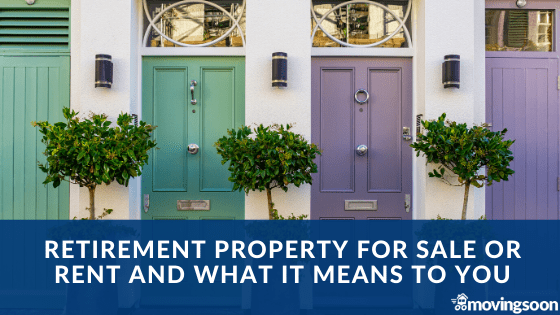Retirement properties, so what are they? We all dream of retirement; no work and more freedom. Have you considered what retirement properties are and the type of home you will be in when you retire?
You may not be aware of the options available to you (or someone close to you). So, we thought it would be helpful to discuss the different types:
Retirement properties for sale >
Retirement properties for rent >
In particular, the definitions of sheltered housing, sheltered accommodation and warden assisted housing. And finally, who is entitled to sheltered housing and retirement property.
Table of Contents
Retirement properties – number of units rented and sold in 2021
According to McCarthy & Stone they sold and rented circa 1,100 new properties (source: McCarthy & Stone plc website) in 2021. Churchill Retirement Living sold 413 units up to the end of June 2021 (source: Churchill Retirement Living).
Retirement Properties To Buy Or Rent
Who can buy or rent retirement property? Put simply, retirement property is property available to people of a certain age. This is usually age 60 or over. However, you can find property marketed for over 50s or the over 55s.
These properties are intended for people who can live independently. Also they might want to live near people of a similar age. The reason an age is put on the property is because the property is in a designated community for ‘older people’.
There are various types of homes available for each age range. These can be flats, bungalows or houses available to buy or to rent.
One way to buy property for the over 55s is through the Older People’s Shared Ownership scheme (OPSO). This works in the same way as the standard shared ownership scheme. You part buy, part rent a property from a housing association.
The key difference is that you cannot buy more than a 75% share of the property. However, once you do own 75% you do not have to pay rent on the remaining 25%. This is a great option for those looking to downsize. Or for those who want to live in a particular location but cannot afford to buy outright.
Are there mortgages for over 50s and over 60s?
Mortgage providers may offer mortgages when you are over 50, 0ver 55 or even over 60. However, you will need to do your research to see what type of mortgages are available.
The Definition Of Sheltered Accommodation
There can be some confusion about sheltered housing and what it means. There is also some confusion between sheltered and supported accommodation.
Sheltered accommodation is intended for older people. Typically they want to maintain an independent lifestyle but would like access to support if needed. So what is supported housing then? Actually, both are very similar. The key difference is that supported housing is not just for older people. It is available to people of varying abilities who may need support to live alone.
One method of support for sheltered and supported housing arrangements is an on-site warden. You may have heard of warden assisted housing. This is simply another phrase for sheltered or supported housing.
Who Is Entitled To Sheltered Housing And How Much Does Sheltered Housing Cost?
Eligibility and cost will depend on the sheltered housing provider. The sheltered accommodation offered by housing associations is often more affordable and will not require a deposit. However ,they will have their own eligibility criteria. You will need to check the age that the property is targeted for.
What Does Extra Care Housing Mean?
This is a very different environment to those mentioned above. Extra care housing provides 24 hour care and facilities for residents. It will include facilities, such as staff and carers around the clock, daily meals and snacks. Also included are planned activities for residents to take part in. There are communal areas and often onsite services available such as hairdressers and beauticians.
Whilst visitors can generally visit whenever they like, residents may not be able to leave without supervision or an agreed chaperone. This will depend on the health and well being of the resident and the particular care home they are in.
How To Find Retirement Properties Near Me?
Once you have an idea of which type of retirement property you need, you can start your retirement property search. It is best to choose a website which specialises in the various types of retirement property for sale and retirement property for rent available.
Once you are in a position to move use our moving house checklist which lists the things you need to do when moving house.
We hope we’ve answered all your questions and wish you all the best in finding your happy retirement home!


